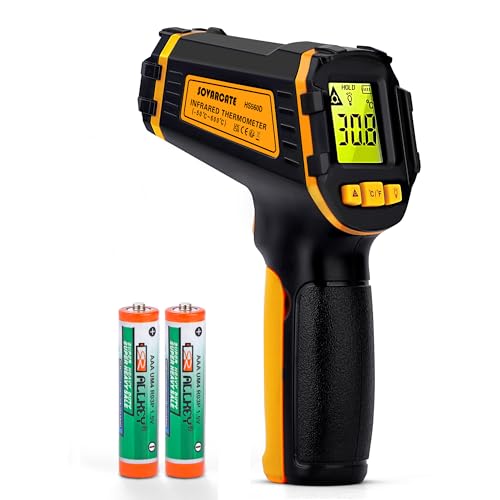The Basics of Infrared Thermometers
Infrared thermometers work by measuring the thermal radiation emitted by an object. Unlike contact thermometers, they do not need physical contact with the object being measured. Infrared thermometers can detect temperatures without making actual contact with the surface of a material, which means that they can be used to measure a wide range of materials without contaminating or damaging them.
Determining the Durability of Infrared Thermometers
Durability refers to the ability of the device to withstand wear and tear over time. Infrared thermometers have no user serviceable parts, which makes their durability particularly important. These devices are constructed from industrial-grade materials, making them tough and reliable. They can withstand exposure to dust, dirt, and other environmental factors that can affect their performance, making them durable enough to use in a wide range of settings.
Factors Affecting Infrared Thermometer Durability
Infrared thermometers can withstand harsh environments, but there are several factors that could affect their durability. Excessive humidity or moisture can damage the thermometer’s components, while exposure to extreme temperatures can also cause damage. Dropping the thermometer or subjecting it to mechanical shock can also affect its performance. Regular maintenance can extend the life of the thermometer and ensure that it performs optimally for an extended period of time.
Ensuring the Durability of Infrared Thermometers
Manufacturers of infrared thermometers recommend several measures to ensure that the devices remain durable. One of the most important measures is to periodically calibrate the thermometer to ensure that it is providing accurate temperature readings. The device should also be stored in a cool, dry place to prevent moisture from affecting its sensitive components. Additionally, avoid dropping the thermometer to prevent damage.
Infrared thermometers are tough, reliable, and highly durable. They are constructed using industrial-grade materials that can withstand wear and tear over time. The devices can function in many different environments and are built for long-lasting, reliable performance. Ensuring the durability of these devices is critical to maintaining their performance and extending their lifespan. By regularly calibrating the thermometer, storing it in the proper environment, and using best practices when handling it, you can ensure optimal performance for years to come.






